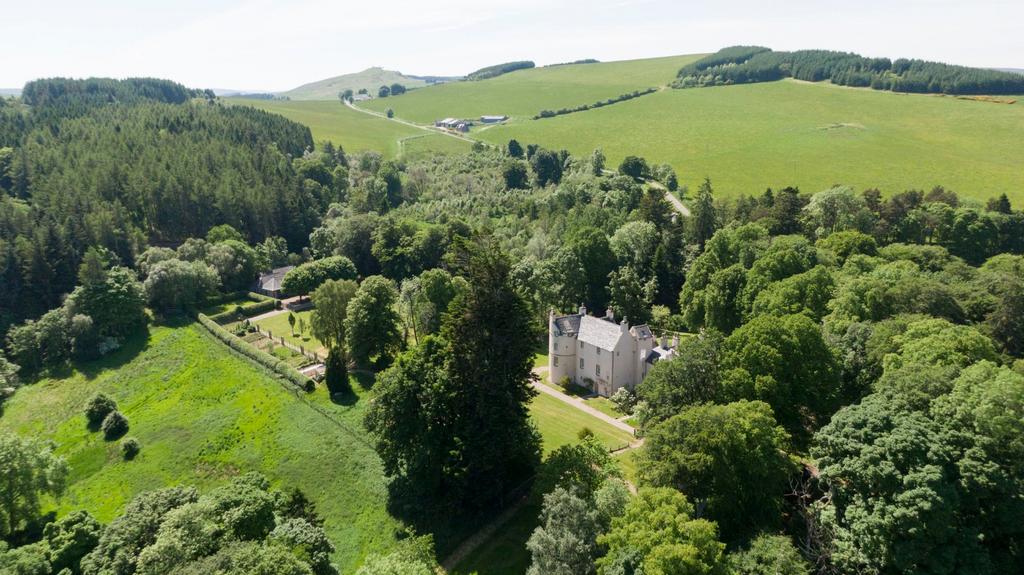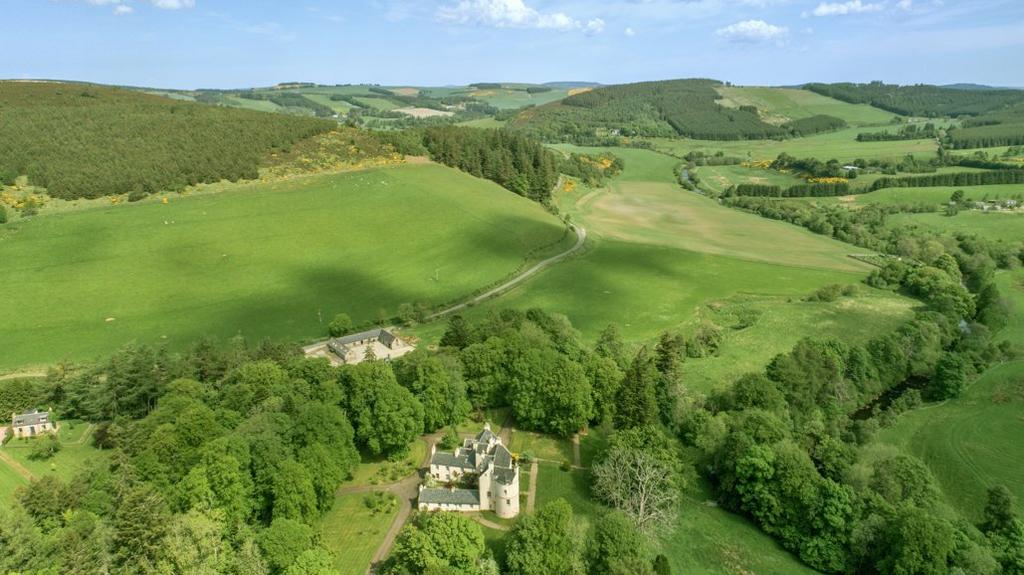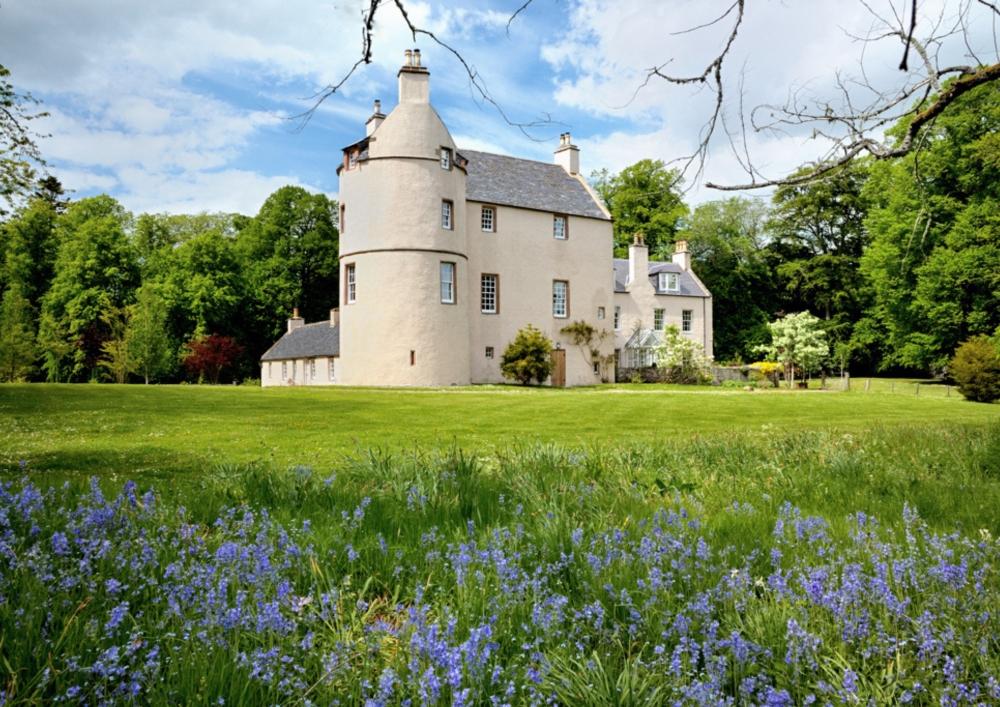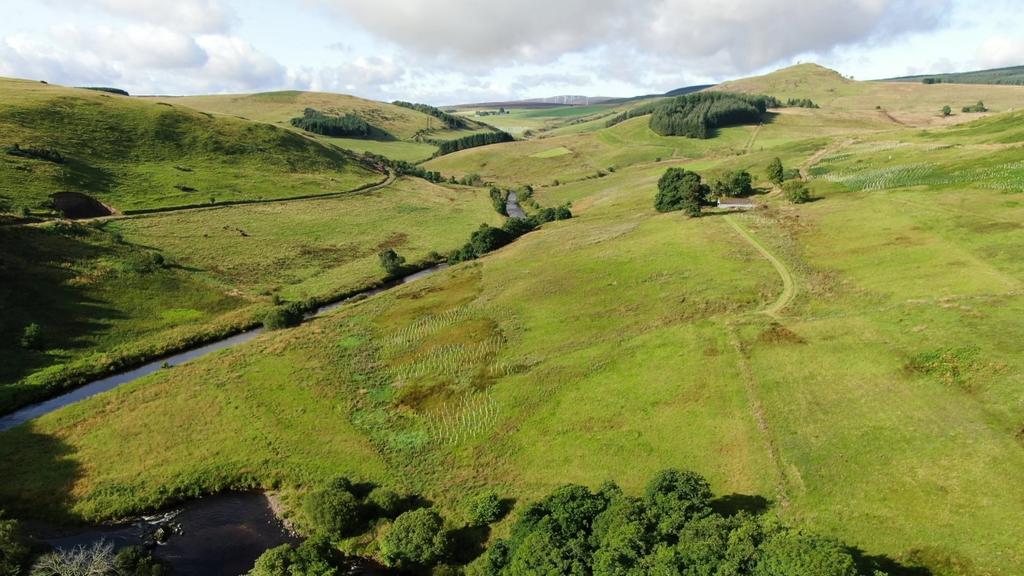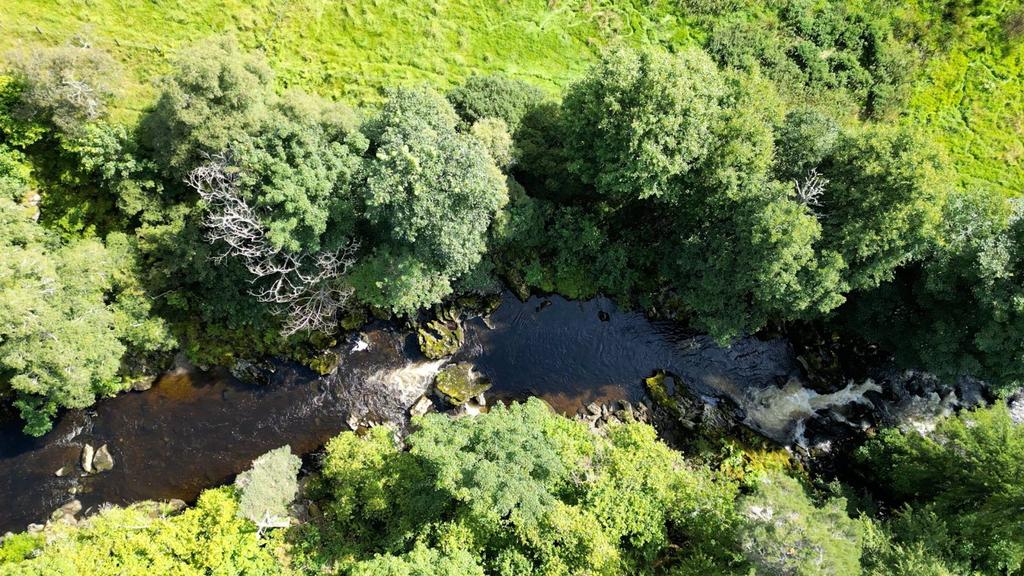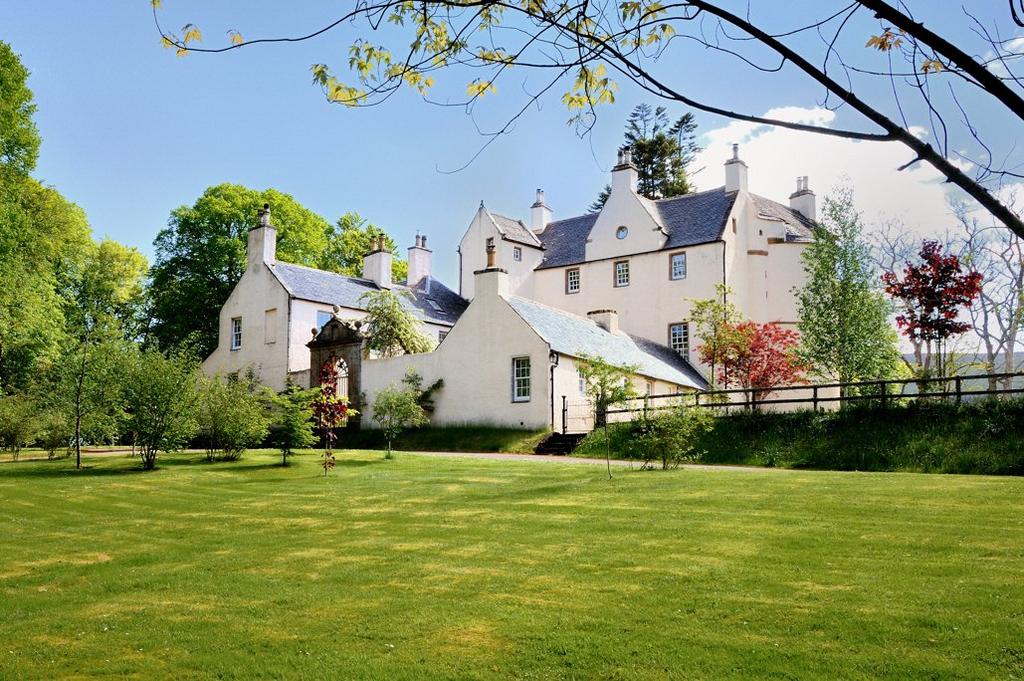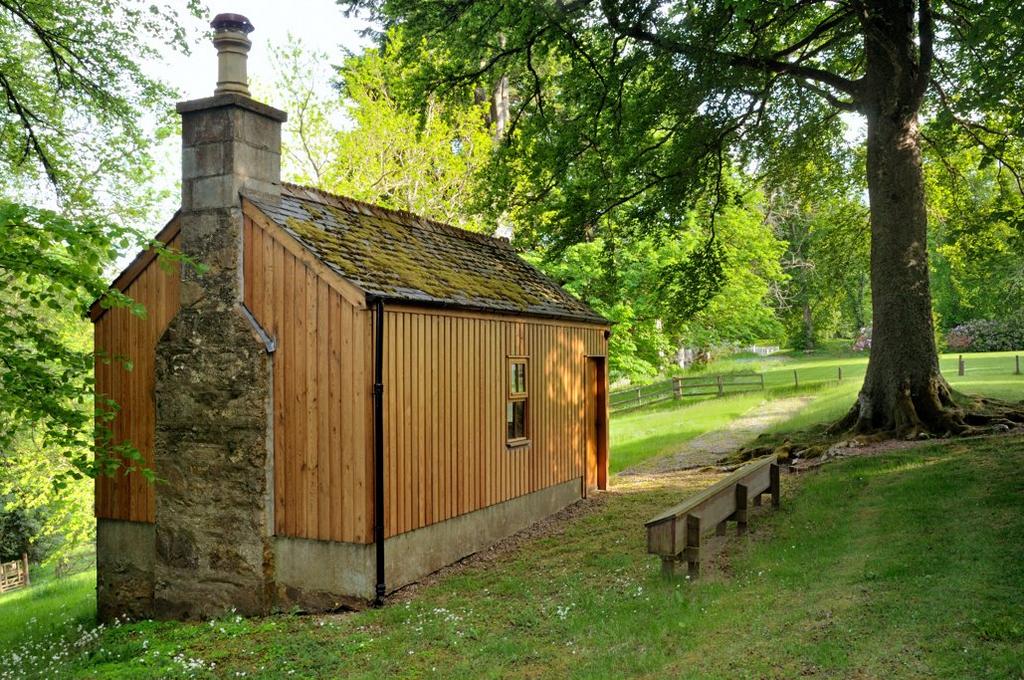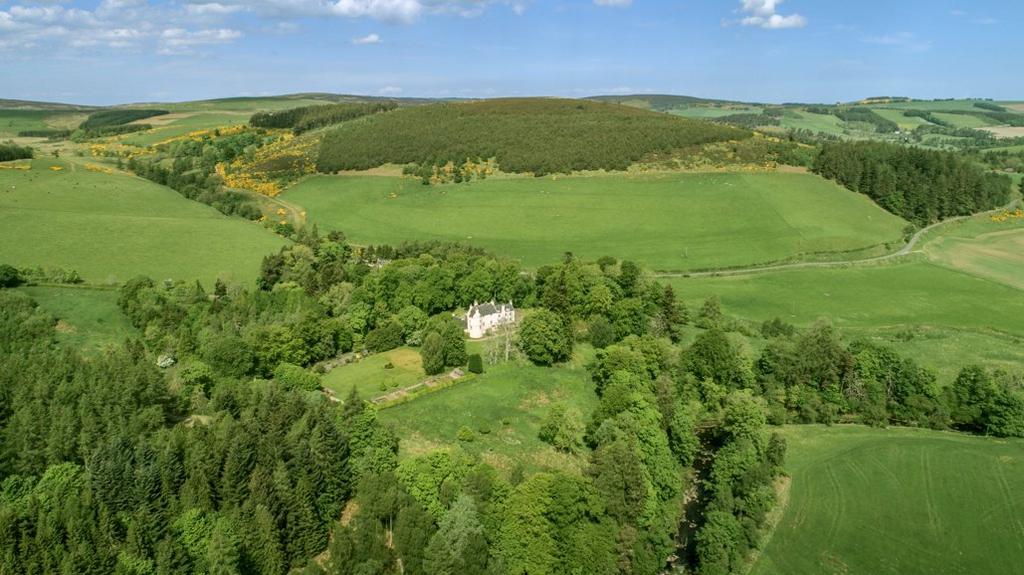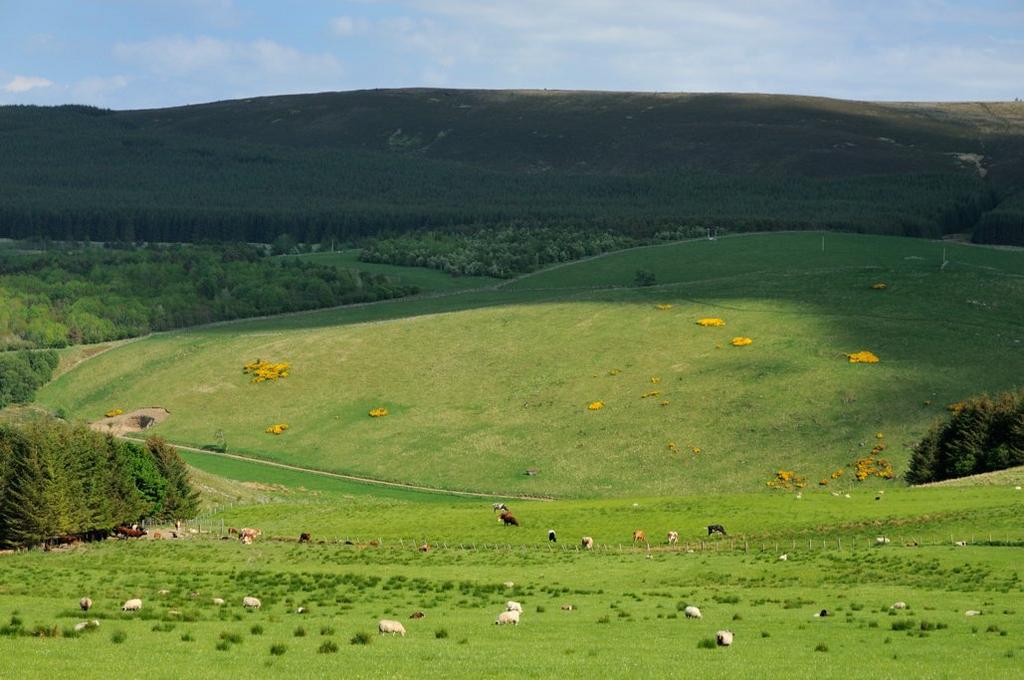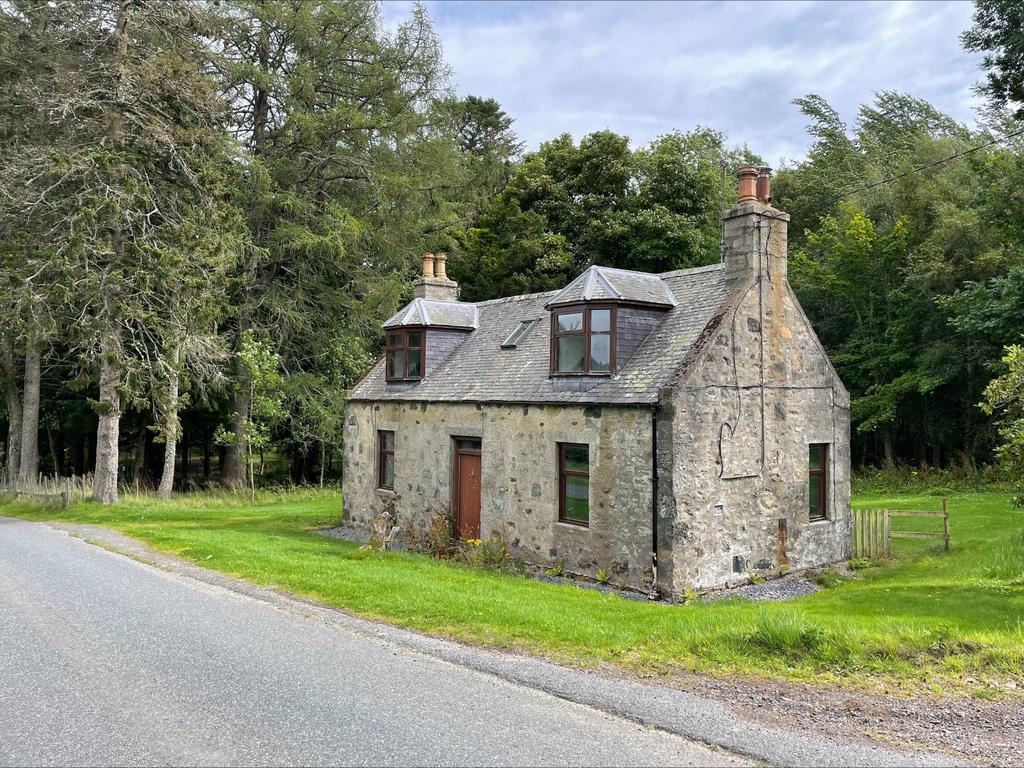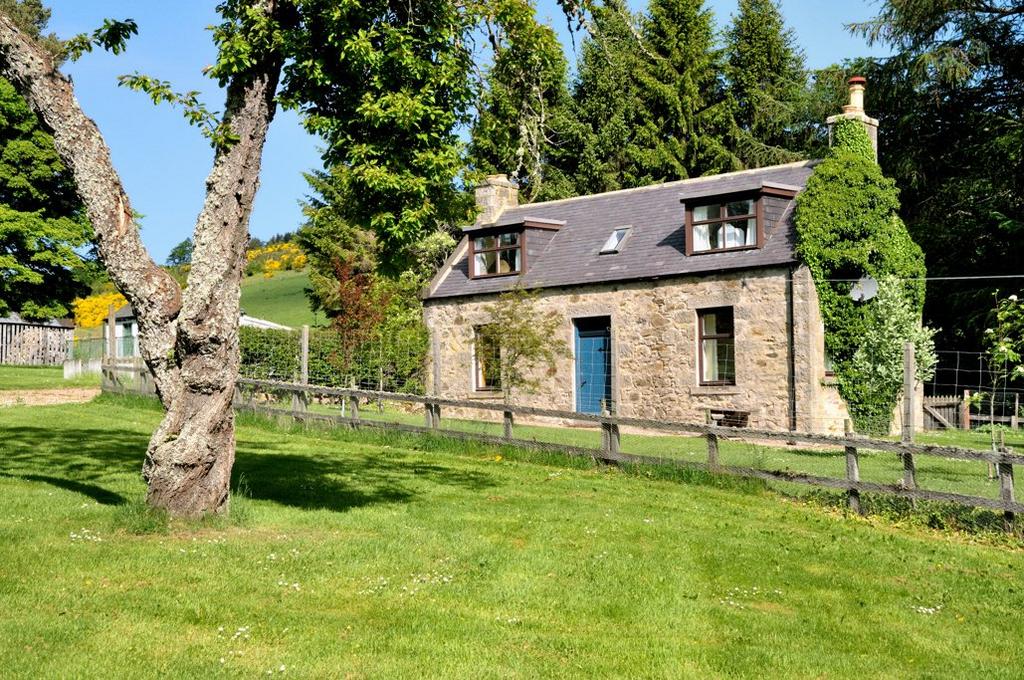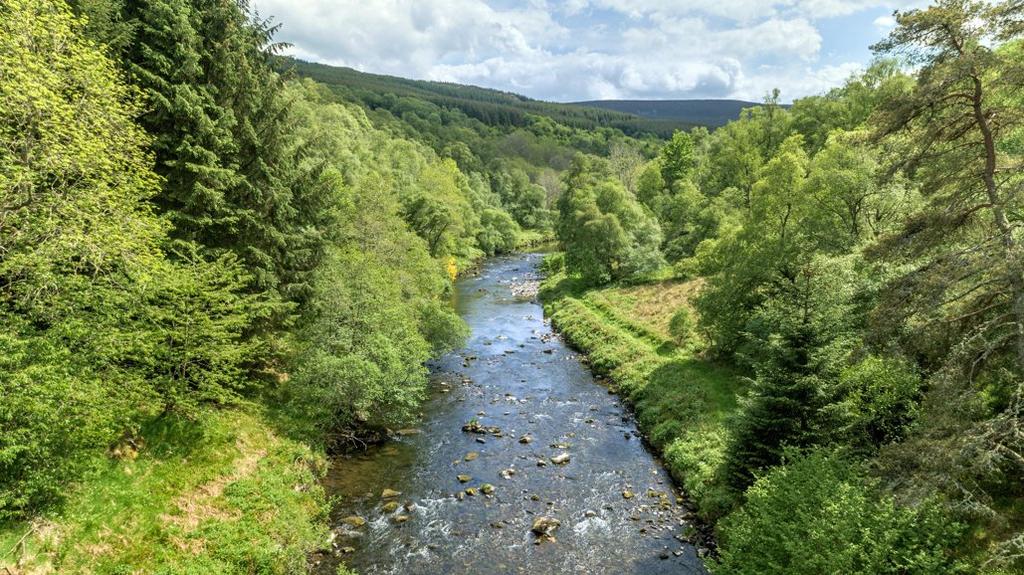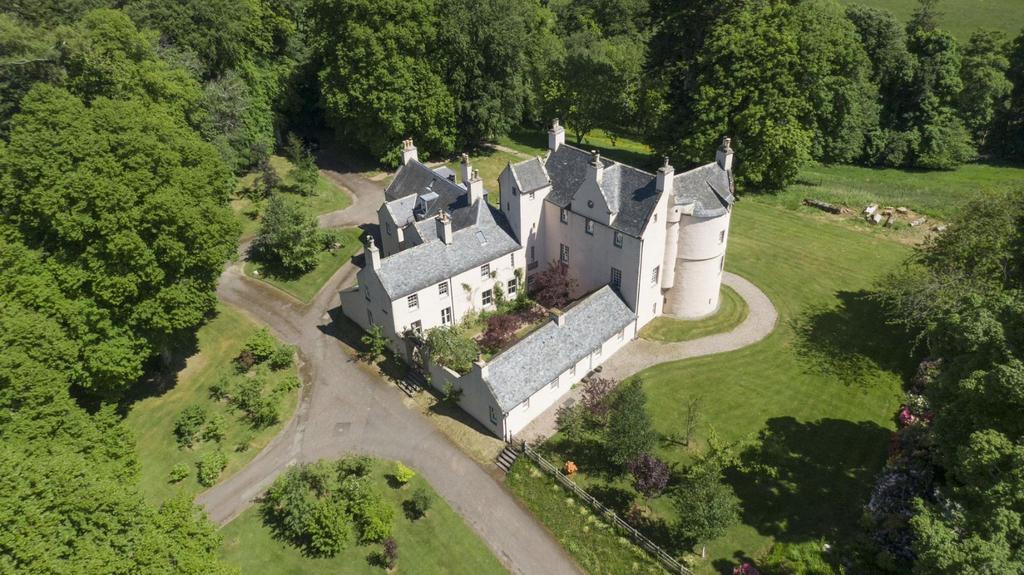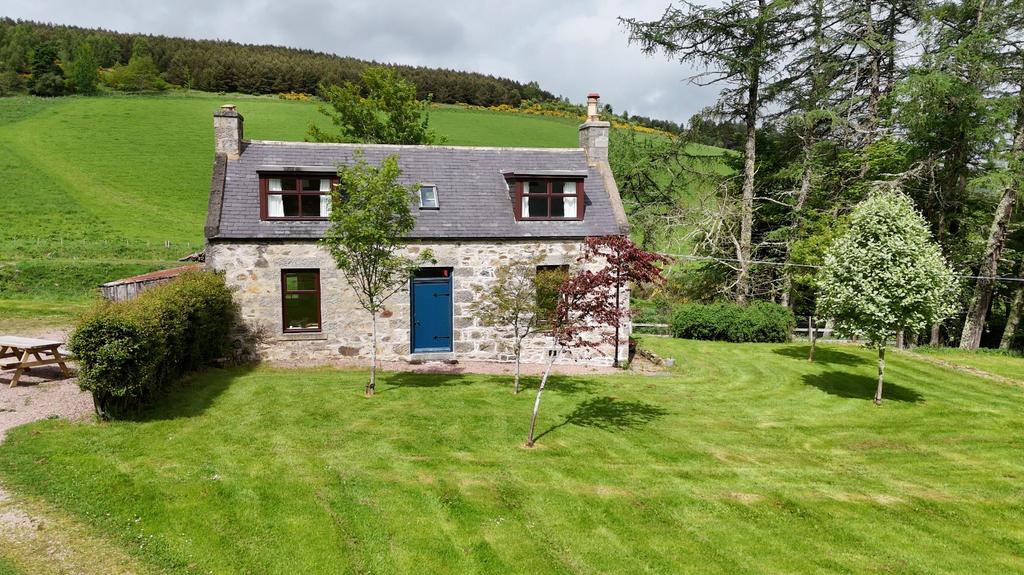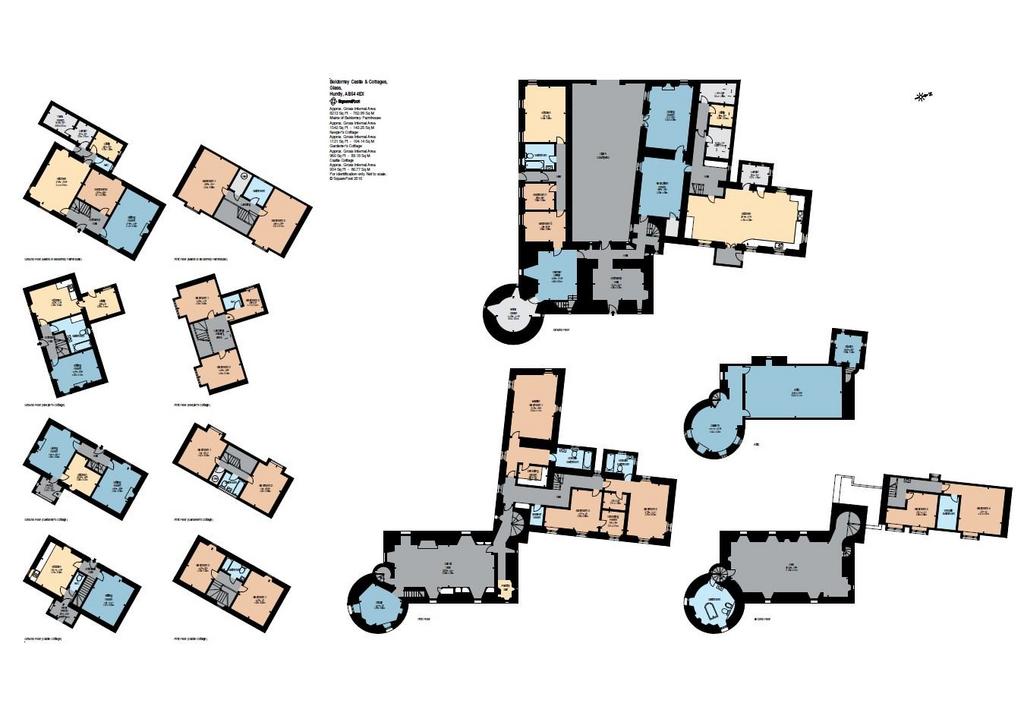2 bedroom country house
Featured
Study
Net carbon
Country house
2 beds
866.00 acre(s)
Key information
Tenure: Leasehold | unconfirmed share | unconfirmed yrs left
Council tax: Ask agent
Features and description
* CLOSING DATE: 10 DECEMBER 2024 *
CURRENT OWNER'S OBJECTIVES FOR SALE
Highlands Rewilding’s mission is nature recovery and community prosperity through rewilding taken to scale in Scotland, and then beyond.
They seek to help rewild and re-people the Scottish Highlands by increasing carbon sequestration, growing biodiversity, creating green new jobs and generating sustainable profit for purpose.
The company’s land management actions and objectives are science-led, aiming to accelerate nature-based solutions that can help fight the existential and related crises of climate meltdown, biodiversity collapse, and social inequality, whilst helping to rebuild local economies.
Beldorney is one of three current sites being managed as a multi-habitat open air natural capital laboratory, generating data that can reliably underpin credits in natural capital, so making the nature-recovery industry confidently investable.
The work at Beldorney is rooted in the community, as the company aims to break new ground in consultation, partnership and involvement with the communities of which it is a part.
To achieve the four key goals (to the right), Highlands Rewilding employs a combination of land management activities: ecological restoration, regenerative agriculture, mixed forestry, wetland creation and recreational management, and carefully monitors outcomes including through experimental research.
An explanation of the envisaged future management model under either the Nature and Community in Perpetuity (NCIP) or Operating System Partnerships for Rewilding (OSPREY) is set out within the brochure.
If prospective purchasers are interested in the concept of owning Beldorney Estate but prefer a free hand to manage the estate in future without the continued involvement of Highlands Rewilding Ltd, they are also welcome to arrange viewings and submit offers but this should be on the understanding that offers from those purchasers willing to embrace the future management of the estates under NCIP or OSPREY will be looked upon more favourably.
THE ESTATE
Beldorney is a 351-hectare grassland-dominated estate in Aberdeenshire. The estate is managed by Highlands Rewilding primarily for natural capital uplift—biodiversity and carbon-based projects, nature restoration and community prosperity.
The estate’s grasslands were previously heavily grazed by sheep and cows, before being rested and undergoing active HRL management. This management includes regenerative agriculture in the form of adaptive multi-paddock grazing by a small herd of cattle to improve the species richness and diversity of the grasslands at Beldorney.
Beldorney has several blocks of conifer plantation and an area of native woodland with clear potential for restoration, species rich grasslands and riparian and other wetland vegetation. Recent planting aims to extend the ancient, semi-natural broadleaf woodland from the northeast corner of the Beldorney estate, both sequestering carbon and expanding this important habitat.
The eastern edge of the estate is bordered by the River Deveron, which is well known for its Atlantic Salmon, sea trout and brown trout and, in fact, still holds the UK record for a salmon caught on a fly. There aremany opportunities for collaboration in landscape-scale restoration within the river catchment.
Beldorney contains a 16th Century tower house with Georgian and Victorian additions. The estate also includes two stone cottages, the Mains of Beldorney—a farmhouse and livestock rearing farm and buildings, as well as a garage block.
The estate also has the potential for further development to re-people this area, containing ten ruined crofts, which have scope for future residential development subject to due diligence and planning consent.
BELDORNEY CASTLE
The castle comprises a 16th Century Z plan tower house, built between 1550 and 1575 by the Gordon Family, one of the most powerful families in the northeast at that time.
Within the castle there are fragmentary remains of the original wall and ceiling paintings, depicting military, musical and religious themes.
Two 17th Century additions form a sheltered west facing courtyard. Further accommodation was added at the end of the 19th Century. A major restoration of the original building was undertaken between 1982 and 1988. Further significant modernisation and repair works took place between 2015 and 2021.
Set back from the road and approached along a short tree-lined drive the castle and its courtyard are striking. Directly below the castle are the banks of the River Deveron and a group of natural stone pools known as St Wallach’s Baths.
A network of paths connect the castle to the rest of the estate, including woodland and riverside walks, where a number of benches overlook the Deveron.
The formal vaulted entrance hall contains a large arched fireplace, and two further vaulted rooms connect to the single story south wing. The self-contained accommodation in the south wing contains two bedrooms, a small entrance hall, bathroom, kitchen and sitting room.
The Grand Hall is an impressive room with pitch pine panelling and a magnificent fireplace, ideal for large group dining or gatherings.
The Upper Hall, with its beamed, vaulted ceiling provides another flexible space for presentations, workshops and breakout sessions, as required.
Beldorney has a welcoming kitchen with a separate dining room ideal for smaller groups.
The castle hosts five bedrooms, with a further two in the self-contained apartment, alongside five bathrooms, two drawing rooms, a cloak room, utility room, dressing room, and terrace.
To the west of the castle is a walled garden. Across the lawn, to the east of the castle, is an atmospheric timber framed fishing hut, currently used as the estate office. There is a garage block within the castle grounds, described on the next page.
The castle grounds also contain a polytunnel and the unusual sight of a brilliant traditional red telephone box.
Since the purchase of the estate by Highlands Rewilding in 2021, the castle has been used for team gatherings, and rented on Airbnb for group, family, and corporate retreats. A buyer wishing to use the castle only on occasion has the option of Highlands Rewilding managing the property year-round.
It is therefore available to the purchaser with vacant possession.
KEEPER'S COTTAGE
An attractive stone cottage with a slate roof, set away from the road in its own grounds.
The cottage contains three bedrooms, with one en-suite and one bathroom, a kitchen and sitting room as well as a study area and utility room. The cottage has oil fired heating and a wood stove.
Currently offered as short term letting accommodation on Airbnb.
GARDEMER'S COTTAGE
A comfortable two-bedroom stone and slate cottage, within a woodland setting. The cottage has double glazing throughout, a bathroom, sitting room, living room, porch, and kitchen. The cottage has oil fired central heating and a wood stove.
The cottage has a small garden and two timber outbuildings.
The cottage is uninhabited and in need of full refurbishment.
CASTLE COTTAGE
A stone cottage with a slate roof, modernised in 2009. With two bedrooms, a sitting room and kitchen, one bathroom plus a downstairs toilet, and a porch.
The cottage is partly enclosed by a beech hedge and has a wood store adjacent.
The cottage has oil fired heating and a wood stove.
Currently offered as short term letting accommodation on Airbnb.
GARABE BLOCK
The Garage Block is within the castle grounds and passage. There is a range of sheds and garages, formerly the stables for the castle.
These buildings may have potential for residential conversion, subject to due diligence and planning consent.
A buyer wishing to use the any or all of these cottages and buildings only on occasion has the option of Highlands Rewilding managing them year-round.
MAINS OF BELDORNEY FARM AND FARMHOUSE
Mains of Beldorney Farm contains a south facing farmhouse, with a garden and parking area. The house was last occupied in 2009 and is in need of a full refurbishment.
The farm buildings include a traditional stone steading with a partially slated roof, and a steel framed barn with corrugated roof, livestock handling pens and loading bank, and a separately-located steel framed machinery shed.
Previously a farm for stock rearing, the Mains has strong potential for redevelopment and use as an enterprise hub, with good access via the road to the highway.
GRASSLANDS
Beldorney is a grassland-dominated estate. Highlands Rewilding commissioned a survey of habitat condition at Beldorney, using the Defra 3.1 metric. The Defra metric condition survey classifies habitats into three categories: Poor, Moderate and Good.
Almost all of the estate’s 73ha of acid grassland was in Good or Moderate condition, while almost half of the 180ha of neutral grassland was in Poor condition. Highlands Rewilding are working towards improving condition with adaptive grazing.
Carbon opportunity: Grassland soils at Beldorney have a measurement-based stock of 85,536 tCO2e. However, established figures and models suggest that one might expect up to 80% more carbon in typical soils of these kinds, indicating strong potential for increasing the grassland carbon sink. A separate model-based analysis of one future management scenario suggests that a further 85,504 tCO2e could be sequestered across the estate over the next 100 years; a 48% increase on current modelled stocks.
WOODLANDS
The woodland at Beldorney is a mixture of riparian native woodland running along the banks of the River Deveron, with shelterbelts of mixed productive conifer species scattered across the estate. Existing blocks of conifers have been managed in the past by conventional thinning with harvester and areas which were ready to harvest have been clear felled. The restocking of these areas has been with native broadleaves to expand the riparian woodland upslope. In addition to this, a new 18ha native woodland was planted along the River Deveron to increase biodiversity in the area and expand the riparian woodland upstream.
Carbon opportunity: HRL estimates the woodland biomass (of around 32,000 trees) to contain between 11,980 and 16,124 tCO2e, with an additional 5,027 to 54,201 tCO2e in woodland soils, depending on their depth. Modelling suggests that total woodland carbon storage could be as high as 1,688 tCO2e per hectare, 7.5 times greater than the lowest grassland values. The future sequestration potential of the trees themselves is estimated at 15,569 tCO2e over 100 years in the absence of further interventions.
WOODLAND TYPES
(1) The coniferous woodland (47.7ha) is a mixed-age class of Sitka spruce, Norway spruce, Scots pine, Lodgepole pine, and larch. The youngest areas of productive woodland are approximately 30-year-old shelterbelts, through to mature stands planted in the 1960s.
(2) The broadleaved woodland (57.9ha) is a mix of recently restocked productive areas, which have been converted to native woodland through to ancient semi natural woodland.
PEATLANDS
A small amount of Dystrophic blanket peat exists in the north-western corner of the estate, with some over 4 metres deep. This 4.8-hectare area contains a total peat volume of approximately 96,240m3.
While this is a substantial carbon stock, much of the peatland has been affected by planting and drainage over the years. A Sitka spruce plantation from 1971 was harvested and then partially restocked with native broadleaves in 2020, and Norway spruce and hybrid larch have also been planted on part of the peat. The remainder has clear signs of ground disturbance and drainage, with sparse pine regeneration in the northwest corner. These disturbances mean that Beldorney’s peatland is almost certain to be a net carbon source.
Carbon opportunity: This small area of peat in Beldorney contains something in the range of 11,501 to 22,724 tCO2e; a figure very similar to that for the entire woodland biomass of Beldorney. Restoring these areas to near-natural condition, we can expect a net saving of 1.463.46 tCO2e ha-1 yr-1, making this part of the estate a net carbon sink once again.
CARBON SEQUESTRATION AND BIODIVERSITY UPLIFT OPPORTUNITIES
Combining carbon storage in grassland soils, woodland biomass, woodland soils and peat, estimates partly based on measurement and partly on modelling suggest a total in the range of 114,044 to 178,585 tonnes of CO equivalent (tCO2e).
Carbon modelling gives us an estimate of 85,504 tCO2e sequestration potential across the estate over the next 100 years.
Highlands Rewilding has studied biodiversity at habitat, species and genetic levels, using field observations, camera traps, acoustic monitoring and environmental DNA (eDNA) sampling, amongst other techniques.
Together these give a rich and often surprising picture of diversity on the estate, with some areas having enormous value for many different species, such as wetland, native woodland areas, pockets of species-rich grasslands and heathland, and others being notably lacking, providing high future potential for biodiversity uplift.
The estate is located in the Deveron Valley, with the eastern edge of the estate bounded by approximately 2.7km of the River Deveron, which rises in the hills above the Cabrach, to the northeast of the Cairngorms.
CURRENT OWNER'S OBJECTIVES FOR SALE
Highlands Rewilding’s mission is nature recovery and community prosperity through rewilding taken to scale in Scotland, and then beyond.
They seek to help rewild and re-people the Scottish Highlands by increasing carbon sequestration, growing biodiversity, creating green new jobs and generating sustainable profit for purpose.
The company’s land management actions and objectives are science-led, aiming to accelerate nature-based solutions that can help fight the existential and related crises of climate meltdown, biodiversity collapse, and social inequality, whilst helping to rebuild local economies.
Beldorney is one of three current sites being managed as a multi-habitat open air natural capital laboratory, generating data that can reliably underpin credits in natural capital, so making the nature-recovery industry confidently investable.
The work at Beldorney is rooted in the community, as the company aims to break new ground in consultation, partnership and involvement with the communities of which it is a part.
To achieve the four key goals (to the right), Highlands Rewilding employs a combination of land management activities: ecological restoration, regenerative agriculture, mixed forestry, wetland creation and recreational management, and carefully monitors outcomes including through experimental research.
An explanation of the envisaged future management model under either the Nature and Community in Perpetuity (NCIP) or Operating System Partnerships for Rewilding (OSPREY) is set out within the brochure.
If prospective purchasers are interested in the concept of owning Beldorney Estate but prefer a free hand to manage the estate in future without the continued involvement of Highlands Rewilding Ltd, they are also welcome to arrange viewings and submit offers but this should be on the understanding that offers from those purchasers willing to embrace the future management of the estates under NCIP or OSPREY will be looked upon more favourably.
THE ESTATE
Beldorney is a 351-hectare grassland-dominated estate in Aberdeenshire. The estate is managed by Highlands Rewilding primarily for natural capital uplift—biodiversity and carbon-based projects, nature restoration and community prosperity.
The estate’s grasslands were previously heavily grazed by sheep and cows, before being rested and undergoing active HRL management. This management includes regenerative agriculture in the form of adaptive multi-paddock grazing by a small herd of cattle to improve the species richness and diversity of the grasslands at Beldorney.
Beldorney has several blocks of conifer plantation and an area of native woodland with clear potential for restoration, species rich grasslands and riparian and other wetland vegetation. Recent planting aims to extend the ancient, semi-natural broadleaf woodland from the northeast corner of the Beldorney estate, both sequestering carbon and expanding this important habitat.
The eastern edge of the estate is bordered by the River Deveron, which is well known for its Atlantic Salmon, sea trout and brown trout and, in fact, still holds the UK record for a salmon caught on a fly. There aremany opportunities for collaboration in landscape-scale restoration within the river catchment.
Beldorney contains a 16th Century tower house with Georgian and Victorian additions. The estate also includes two stone cottages, the Mains of Beldorney—a farmhouse and livestock rearing farm and buildings, as well as a garage block.
The estate also has the potential for further development to re-people this area, containing ten ruined crofts, which have scope for future residential development subject to due diligence and planning consent.
BELDORNEY CASTLE
The castle comprises a 16th Century Z plan tower house, built between 1550 and 1575 by the Gordon Family, one of the most powerful families in the northeast at that time.
Within the castle there are fragmentary remains of the original wall and ceiling paintings, depicting military, musical and religious themes.
Two 17th Century additions form a sheltered west facing courtyard. Further accommodation was added at the end of the 19th Century. A major restoration of the original building was undertaken between 1982 and 1988. Further significant modernisation and repair works took place between 2015 and 2021.
Set back from the road and approached along a short tree-lined drive the castle and its courtyard are striking. Directly below the castle are the banks of the River Deveron and a group of natural stone pools known as St Wallach’s Baths.
A network of paths connect the castle to the rest of the estate, including woodland and riverside walks, where a number of benches overlook the Deveron.
The formal vaulted entrance hall contains a large arched fireplace, and two further vaulted rooms connect to the single story south wing. The self-contained accommodation in the south wing contains two bedrooms, a small entrance hall, bathroom, kitchen and sitting room.
The Grand Hall is an impressive room with pitch pine panelling and a magnificent fireplace, ideal for large group dining or gatherings.
The Upper Hall, with its beamed, vaulted ceiling provides another flexible space for presentations, workshops and breakout sessions, as required.
Beldorney has a welcoming kitchen with a separate dining room ideal for smaller groups.
The castle hosts five bedrooms, with a further two in the self-contained apartment, alongside five bathrooms, two drawing rooms, a cloak room, utility room, dressing room, and terrace.
To the west of the castle is a walled garden. Across the lawn, to the east of the castle, is an atmospheric timber framed fishing hut, currently used as the estate office. There is a garage block within the castle grounds, described on the next page.
The castle grounds also contain a polytunnel and the unusual sight of a brilliant traditional red telephone box.
Since the purchase of the estate by Highlands Rewilding in 2021, the castle has been used for team gatherings, and rented on Airbnb for group, family, and corporate retreats. A buyer wishing to use the castle only on occasion has the option of Highlands Rewilding managing the property year-round.
It is therefore available to the purchaser with vacant possession.
KEEPER'S COTTAGE
An attractive stone cottage with a slate roof, set away from the road in its own grounds.
The cottage contains three bedrooms, with one en-suite and one bathroom, a kitchen and sitting room as well as a study area and utility room. The cottage has oil fired heating and a wood stove.
Currently offered as short term letting accommodation on Airbnb.
GARDEMER'S COTTAGE
A comfortable two-bedroom stone and slate cottage, within a woodland setting. The cottage has double glazing throughout, a bathroom, sitting room, living room, porch, and kitchen. The cottage has oil fired central heating and a wood stove.
The cottage has a small garden and two timber outbuildings.
The cottage is uninhabited and in need of full refurbishment.
CASTLE COTTAGE
A stone cottage with a slate roof, modernised in 2009. With two bedrooms, a sitting room and kitchen, one bathroom plus a downstairs toilet, and a porch.
The cottage is partly enclosed by a beech hedge and has a wood store adjacent.
The cottage has oil fired heating and a wood stove.
Currently offered as short term letting accommodation on Airbnb.
GARABE BLOCK
The Garage Block is within the castle grounds and passage. There is a range of sheds and garages, formerly the stables for the castle.
These buildings may have potential for residential conversion, subject to due diligence and planning consent.
A buyer wishing to use the any or all of these cottages and buildings only on occasion has the option of Highlands Rewilding managing them year-round.
MAINS OF BELDORNEY FARM AND FARMHOUSE
Mains of Beldorney Farm contains a south facing farmhouse, with a garden and parking area. The house was last occupied in 2009 and is in need of a full refurbishment.
The farm buildings include a traditional stone steading with a partially slated roof, and a steel framed barn with corrugated roof, livestock handling pens and loading bank, and a separately-located steel framed machinery shed.
Previously a farm for stock rearing, the Mains has strong potential for redevelopment and use as an enterprise hub, with good access via the road to the highway.
GRASSLANDS
Beldorney is a grassland-dominated estate. Highlands Rewilding commissioned a survey of habitat condition at Beldorney, using the Defra 3.1 metric. The Defra metric condition survey classifies habitats into three categories: Poor, Moderate and Good.
Almost all of the estate’s 73ha of acid grassland was in Good or Moderate condition, while almost half of the 180ha of neutral grassland was in Poor condition. Highlands Rewilding are working towards improving condition with adaptive grazing.
Carbon opportunity: Grassland soils at Beldorney have a measurement-based stock of 85,536 tCO2e. However, established figures and models suggest that one might expect up to 80% more carbon in typical soils of these kinds, indicating strong potential for increasing the grassland carbon sink. A separate model-based analysis of one future management scenario suggests that a further 85,504 tCO2e could be sequestered across the estate over the next 100 years; a 48% increase on current modelled stocks.
WOODLANDS
The woodland at Beldorney is a mixture of riparian native woodland running along the banks of the River Deveron, with shelterbelts of mixed productive conifer species scattered across the estate. Existing blocks of conifers have been managed in the past by conventional thinning with harvester and areas which were ready to harvest have been clear felled. The restocking of these areas has been with native broadleaves to expand the riparian woodland upslope. In addition to this, a new 18ha native woodland was planted along the River Deveron to increase biodiversity in the area and expand the riparian woodland upstream.
Carbon opportunity: HRL estimates the woodland biomass (of around 32,000 trees) to contain between 11,980 and 16,124 tCO2e, with an additional 5,027 to 54,201 tCO2e in woodland soils, depending on their depth. Modelling suggests that total woodland carbon storage could be as high as 1,688 tCO2e per hectare, 7.5 times greater than the lowest grassland values. The future sequestration potential of the trees themselves is estimated at 15,569 tCO2e over 100 years in the absence of further interventions.
WOODLAND TYPES
(1) The coniferous woodland (47.7ha) is a mixed-age class of Sitka spruce, Norway spruce, Scots pine, Lodgepole pine, and larch. The youngest areas of productive woodland are approximately 30-year-old shelterbelts, through to mature stands planted in the 1960s.
(2) The broadleaved woodland (57.9ha) is a mix of recently restocked productive areas, which have been converted to native woodland through to ancient semi natural woodland.
PEATLANDS
A small amount of Dystrophic blanket peat exists in the north-western corner of the estate, with some over 4 metres deep. This 4.8-hectare area contains a total peat volume of approximately 96,240m3.
While this is a substantial carbon stock, much of the peatland has been affected by planting and drainage over the years. A Sitka spruce plantation from 1971 was harvested and then partially restocked with native broadleaves in 2020, and Norway spruce and hybrid larch have also been planted on part of the peat. The remainder has clear signs of ground disturbance and drainage, with sparse pine regeneration in the northwest corner. These disturbances mean that Beldorney’s peatland is almost certain to be a net carbon source.
Carbon opportunity: This small area of peat in Beldorney contains something in the range of 11,501 to 22,724 tCO2e; a figure very similar to that for the entire woodland biomass of Beldorney. Restoring these areas to near-natural condition, we can expect a net saving of 1.463.46 tCO2e ha-1 yr-1, making this part of the estate a net carbon sink once again.
CARBON SEQUESTRATION AND BIODIVERSITY UPLIFT OPPORTUNITIES
Combining carbon storage in grassland soils, woodland biomass, woodland soils and peat, estimates partly based on measurement and partly on modelling suggest a total in the range of 114,044 to 178,585 tonnes of CO equivalent (tCO2e).
Carbon modelling gives us an estimate of 85,504 tCO2e sequestration potential across the estate over the next 100 years.
Highlands Rewilding has studied biodiversity at habitat, species and genetic levels, using field observations, camera traps, acoustic monitoring and environmental DNA (eDNA) sampling, amongst other techniques.
Together these give a rich and often surprising picture of diversity on the estate, with some areas having enormous value for many different species, such as wetland, native woodland areas, pockets of species-rich grasslands and heathland, and others being notably lacking, providing high future potential for biodiversity uplift.
The estate is located in the Deveron Valley, with the eastern edge of the estate bounded by approximately 2.7km of the River Deveron, which rises in the hills above the Cabrach, to the northeast of the Cairngorms.
Property information from this agent
About this agent
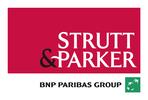
One of the UK’s leading agents in selling, buying and letting town and country houses and cottages, London houses and flats, new homes, farms and estates and residential development land around the country with expert local knowledge backed up by national expertise to ensure a quality service. With a network of over 50 offices nationwide, and 11 offices in Central London, plus our international reach through our memberships with Leading Real Estate Companies of the World® and Luxury Portfolio International, we are well placed to handle any property requirement.
